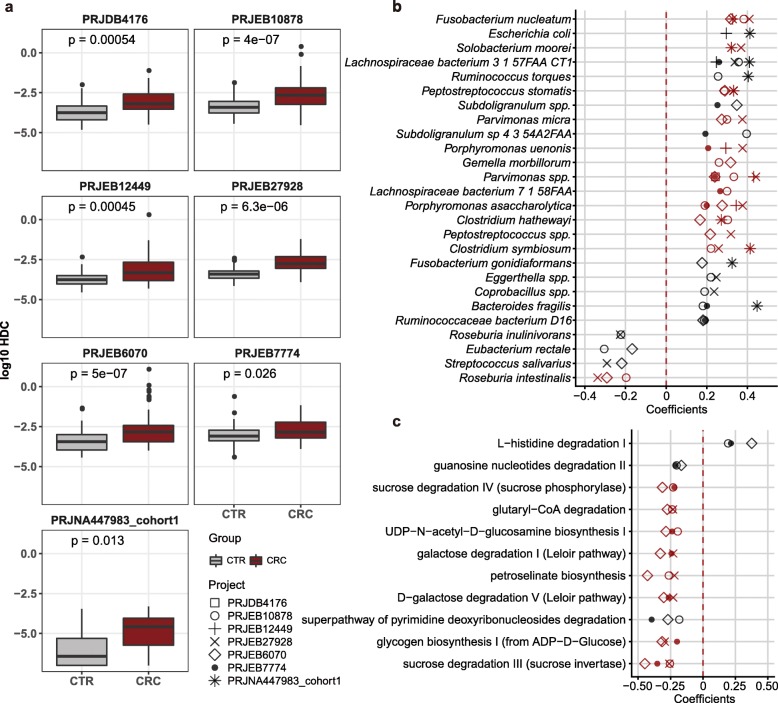Fig. 1.
Human DNA contents (HDCs) were significantly elevated in feces of CRC patients, and correlated with microbial- and functional- biomarkers. a, HDCs, calculated as the percentage of gut metagenomics sequencing reads mapped to the human genome, were significantly higher in CRC (dark red box) than healthy controls (grey box) in seven recently published datasets (Wilcoxon Rank Sum Test, see Methods). b, Species that were significantly correlated with HDCs in two and more CRC datasets (Spearman Rank Correlation, p-value < 0.05, see Methods). Correlations were calculated using both CRC patients and healthy controls. Red: species with differential abundances between CRC and controls in two and more CRC datasets (Wilcoxon rank sum test, adjusted p-value < 0.05, see Methods). These species were referred as to HDC-species in this study. c, Metabolic pathways that were significantly correlated with HDCs in three and more CRC datasets. Correlations were calculated using both CRC patients and healthy controls. Red: pathways with differential abundances between CRC and controls in two and more CRC datasets (Wilcoxon rank sum test, adjusted p-value < 0.05, see Methods). These species were referred as to HDC-pathways in this study

